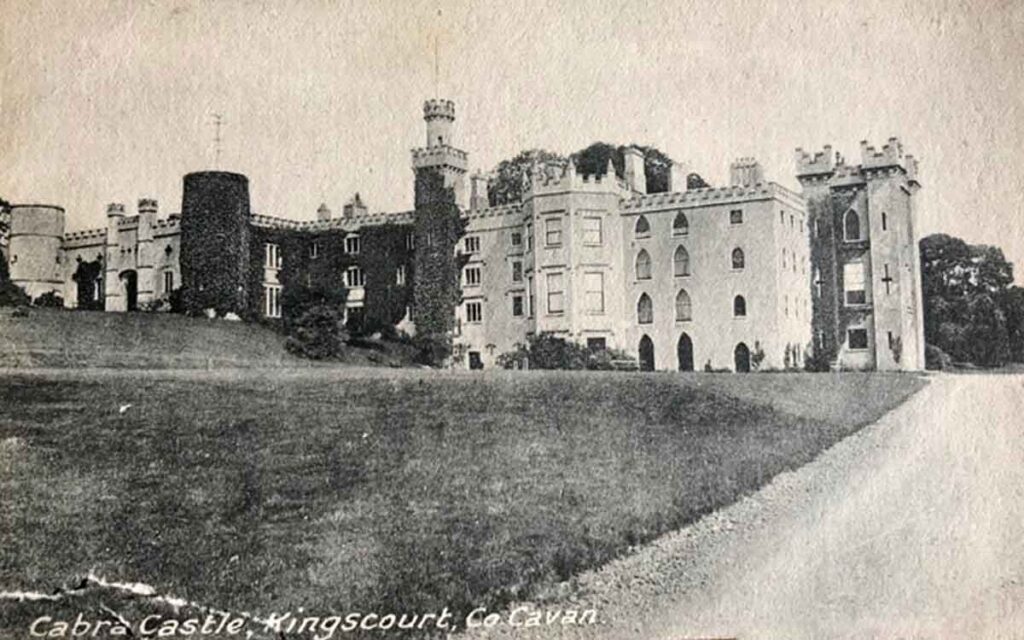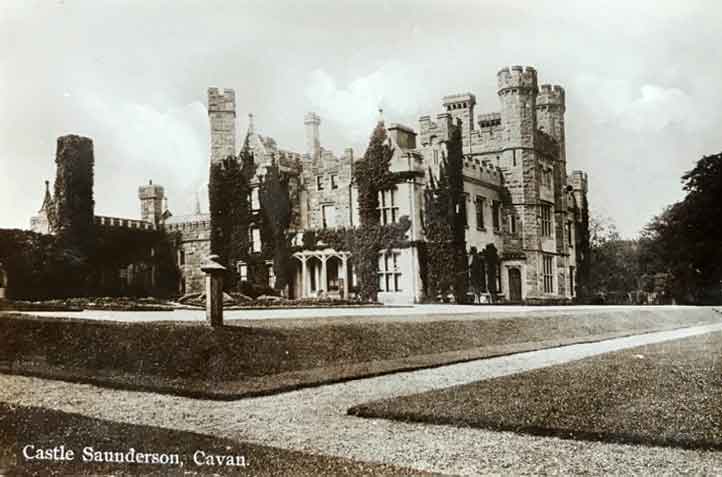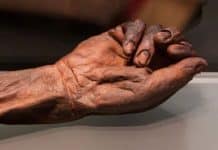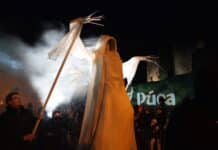ANN MASSEY reveals five haunted places to visit in County Cavan in Ireland!

The County of Cavan is in the Province of Ulster and many descendants hail from Scottish and English roots. Known as the Lakeland County, it is home to 365 lakes and is the source of the River Shannon. It has seen battle, bloodshed, famine and, of course death. So let’s take a look at some of the locations where some of the dead are still in residence!
Cabra Castle, Kingscourt, County Cavan
Two castles, one name, the ruins of the first close to the current building, set by Cromwell’s bridge and the Wishing Well. In the early nineteenth century Cormey Castle was built, absorbing the original estate and being renamed to Cabra Castle by the Pratt dynasty.
Bankruptcy had forced the Pratt family to sell in the sixties due to mountainous tax and maintenance costs and it now stands as a luxury hotel, an imposing combination of Neo-Norman and Gothic design. The courtyard rooms extending over the land and estate of the much earlier settlement and seemingly absorbing the supernatural energy from the earth.
A servant girl of the original property entered into an illicit relationship with the son of the landowner, which remained clandestine until she became pregnant. The outraged family had her dragged from her bed in the servants’ quarters and she was hanged in the nearby woodland. Her presence is felt by the “Hanging Tree” by the courtyard rooms and the ghostly cries of an infant can be heard in the dead of night.
As if that wasn’t terrifying enough, a spectral horse and carriage can be heard racing up to the entrance, screaming to a halt before seemingly leaving a wailing baby behind. Within the building, you may also find yourself face to face with a long dead soldier dressed in early 20th century uniform!
Castle Lake Demesne and streets Bailieborough, County Cavan
The Demesne is haunted by a ghostly apparition known as ‘The Rector,’ terrifying night time travellers. He is described as dark, brooding and well turned out in appearance, from black stovepipe hat to formal suit. He follows the same path, over and over, eyes of coal staring into the night.
The sound of horses would also regularly be heard as folks lay in their beds, but on checking, animals were stabled and quiet. On Main Street, just a few minutes away, a full team of horses with carriage, silently glide, casting fear in all who see it, as it is believed to be a harbinger of death!

Castle Saunderson, Belturbet, County Cavan
The original castle dated back to the 14th century and was acquired by the Saunderson family, supporters of William of Orange. In 1689, the castle was burned by the soldiers of James II. A short time later, 400 of these men were ambushed at the site of the castle and driven into the nearby Finn River where they were drowned.
This was not the only tragedy to befall Castle Saunderson, however. A notable military guest, Major Frederick John Sandys Lindesay died in the castle, with no cause of death given in 1877 and heir to the Barony of Farnham, Barry Maxwell died in a cycling accident on the grounds just two years later. The castle also succumbed to two further fires.
The grounds include a Gothic Revival Church and Family Crypt. So, have the ghosts of the Saunderson family remained or the sudden deaths at the castle making vengeful spirits rise? A ghostly garrison of red coated soldiers has been seen by young children in the early twentieth century marching by, perhaps re-enacting the capture and drowning of the men of James II.
One of the last Mrs Saunderson’s of the Castle viewed workers with contempt to the point she had their domestic water re-routed to the ponds in her precious gardens. They were forbidden from walking in her steps and she had her own special path they nicknamed “Starvation Walk”. Some say she remains to ensure no one beneath her standing walks in her shoes.
Lavey Strand, Lavey, County Cavan
A man was coming home from an event in Cavan town, when he was startled to see a priest appear from nowhere right in front of him. The spectral priest demanded he be taken to the Parish Priest who resided at Lavey Strand, in the ancient townland of Lavey.
The man knocked on the door and the Parish Priest came out to his ghostly companion. The pair spoke at length in Latin before the ghostly cleric disappeared from sight. The terrified man was blessed by the remaining and very much living priest, who advised the man to tell no one of his experience, which of course did not happen! So if you stop to speak with a priest close to the Lavey Inn and he utters in Latin, you should probably bless yourself and pop into the bar for a stiff drink!
Bawnboy Workhouse, Corville, County Cavan
Built in 1852 to accommodate victims of the Great Hunger, the workhouse was segregated in to three men, women and children blocks. Families were only allowed to come together at meal times, their days subject to a harsh work regime and the hours of despair marked by the hourly tolling of the bell.
It was run by a Board of Guardians, who embraced nepotism when handing out job roles and income and took supper away from inmates in order to save money. The buildings themselves were oppressive and harsh, so despair and the feeling of being damned hanged heavy over all within. The morgue saw more bodies than it should and those unfortunate souls were interred on the grounds.
After finally closing in 1921, alternative uses were sought including a boys’ school and a concert hall, however no venture was successful. The dark history and stories of hauntings has made Bawnboy Workhouse an exciting paranormal investigation hotspot over the years. GhostÉire carried out an investigation a few years ago and captured EVPs including desperate disembodied voices crying out that they were stuck.







